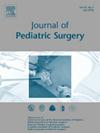Approaches to the Diagnosis and Management of Paediatric Ovarian Tumours and Oncological Outcomes in a Single-centre Study. Evidence in Support Of IPSO Reccomendations
IF 2.4
2区 医学
Q1 PEDIATRICS
引用次数: 0
Abstract
Background
Approaches to paediatric ovarian tumours vary. Cross-sectional imaging is reliable but not always performed. Laparoscopic tumourectomy, although popular, is not recommended by International Paediatric Surgical Oncology Society (IPSO); tumour spillage remains the main concern. We aimed to investigate the reliability of preoperative evaluation and identify perioperative factors associated with adverse outcomes.
Methods
Single-centre retrospective study (2015–2022) of clinical presentation, preoperative investigation, operative approaches and oncological outcomes in all females <18 years treated for ovarian tumours. Logistic regression was used to identify predictors of malignancy and of second disease events. Data are presented as median (IQR) or rates.
Results
Sixty girls aged 12.5 (10–15) years with follow-up of 51 (30.5–76.3) months were included. Incidence of malignant and low malignant potential tumours was 19/60 (32%). Tumour size and consistency proved predictive of malignancy. Clinical assessement, tumour markers and cross-sectional imaging combined showed 75% sensitivity, 100% specificity and 7% misclassified malignancy rate. Second disease events (11/60, 18%) were associated with misclassified malignancy (2/11 vs. 1/49, p = 0.04) and positive margins (4/11 vs. 5/49, p = 0.02). Ovarian-sparing surgery did not influence second events (5/11 vs. 28/49, p = 0.48). There was no significant association between second events and laparoscopic tumourectomy (3/11 vs. 20/49, p = 0.40); spillage rate was however more frequent with laparoscopy (5/11 vs. 2/32, p = 0.008).
Conclusion
Misclassified malignancy, noted in 7% of patients undergoing optimal work-up, adversely impacted outcomes, highlighting the importance of oncological principles in both oophorectomy and ovarian-sparing surgery. Malignancy incidence and misclassification can be underestimated when tumours with malignant behaviour potential, such as immature teratomas and borderline tumours, are grouped as benign. There was no direct association between operative approaches and second events. Laparoscopy, however, failed to maintain oncological principles more frequently than open surgery and hence risks upstaging of paediatric ovarian pathology.
Level of evidence
III.
儿童卵巢肿瘤的诊断和管理方法以及单中心研究的肿瘤结果。支持 IPSO 建议的证据。
背景:治疗小儿卵巢肿瘤的方法各不相同。横断面成像是可靠的,但并非总能进行。腹腔镜肿瘤切除术虽然很受欢迎,但国际儿科肿瘤外科学会(IPSO)并不推荐这种手术;肿瘤溢出仍是主要问题。我们旨在调查术前评估的可靠性,并确定与不良结局相关的围手术期因素:单中心回顾性研究(2015-2022 年):所有女性患者的临床表现、术前检查、手术方法和肿瘤结果:纳入的 60 名女孩年龄为 12.5(10-15)岁,随访时间为 51(30.5-76.3)个月。恶性和低恶性可能性肿瘤的发生率为 19/60(32%)。事实证明,肿瘤的大小和一致性可预测恶性程度。临床评估、肿瘤标记物和横断面成像相结合,显示出75%的敏感性、100%的特异性和7%的误诊率。二次疾病事件(11/60,18%)与误判恶性肿瘤(2/11 vs. 1/49,p = 0.04)和边缘阳性(4/11 vs. 5/49,p = 0.02)有关。保卵巢手术对二次手术没有影响(5/11 vs. 28/49,p = 0.48)。二次事件与腹腔镜肿瘤切除术无明显关联(3/11 vs. 20/49,p = 0.40);但腹腔镜手术的溢液率更高(5/11 vs. 2/32,p = 0.008):结论:在接受最佳检查的患者中,有7%的患者被误诊为恶性肿瘤,这对治疗效果产生了不利影响,凸显了肿瘤学原则在输卵管切除术和卵巢保留手术中的重要性。如果将具有恶性行为潜能的肿瘤(如未成熟畸胎瘤和边缘性肿瘤)归类为良性肿瘤,恶性肿瘤的发生率和误诊率可能会被低估。手术方法与二次事件之间没有直接联系。然而,腹腔镜手术比开腹手术更经常无法维持肿瘤学原则,因此有可能导致小儿卵巢病变的误诊:证据等级:III。
本文章由计算机程序翻译,如有差异,请以英文原文为准。
求助全文
约1分钟内获得全文
求助全文
来源期刊
CiteScore
1.10
自引率
12.50%
发文量
569
审稿时长
38 days
期刊介绍:
The journal presents original contributions as well as a complete international abstracts section and other special departments to provide the most current source of information and references in pediatric surgery. The journal is based on the need to improve the surgical care of infants and children, not only through advances in physiology, pathology and surgical techniques, but also by attention to the unique emotional and physical needs of the young patient.

 求助内容:
求助内容: 应助结果提醒方式:
应助结果提醒方式:


